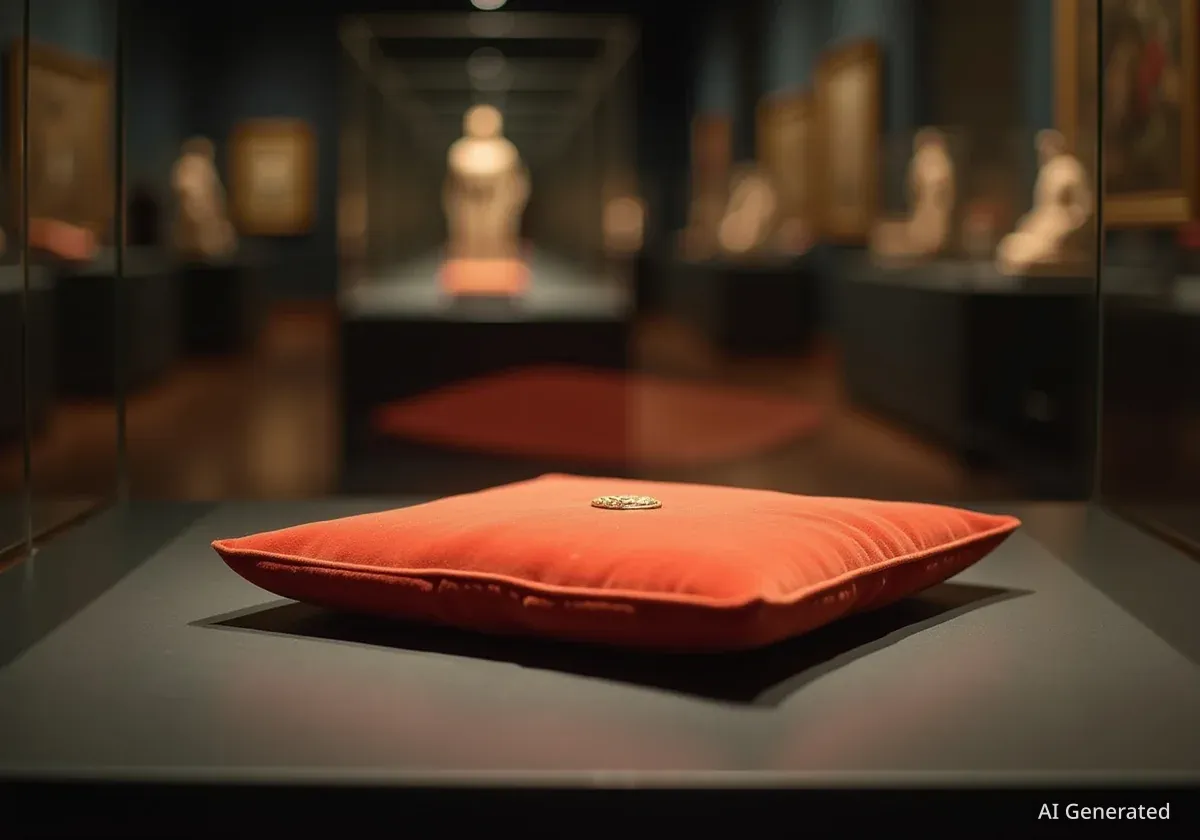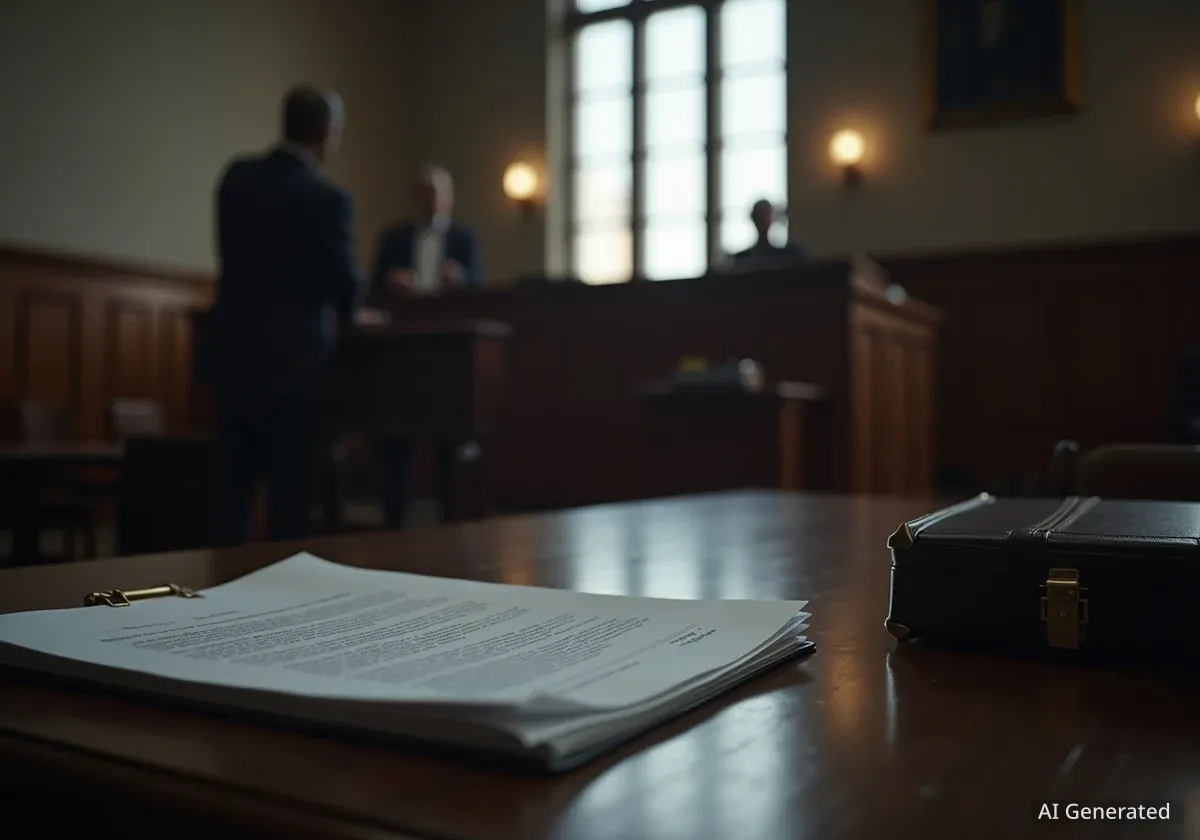French museums are experiencing a notable increase in thefts where valuable items are targeted not for their artistic significance, but for their precious metal content. Authorities believe thieves are melting down stolen gold artifacts for resale, posing a significant challenge to cultural preservation efforts.
Key Takeaways
- Museums in France are seeing a rise in thefts focused on items containing gold.
- Thieves are likely melting down artifacts for their raw material value.
- A diamond-encrusted snuffbox from the Royal Collection was among recent losses.
- Gold nuggets worth €600,000 were stolen from the National Museum of Natural History.
- Despite a decline in overall museum thefts, this specific type of crime is increasing.
Precious Metals Targeted in Recent Heists
Recent incidents highlight a shift in criminal motives. Rather than seeking to sell priceless artworks on the black market, thieves are now focusing on the intrinsic value of materials. This trend means that once an item is stolen, its chances of being recovered in its original form are very low.
One prominent case involves a diamond-encrusted snuffbox from the Royal Collection. This 18th-century item, lent to the Cognacq-Jay museum in Paris for an exhibition, was among seven objects of "great historic and heritage value" stolen last year. Officials fear the snuffbox, adorned with nearly 3,000 diamonds, may have been taken for its gold content rather than its cultural importance.
Fact: Royal Collection Snuffbox
The stolen Fabrique Royale snuffbox was encrusted with close to 3,000 diamonds and dated back to the 18th century. Its estimated value as an artifact far exceeded its material worth, yet it was likely targeted for its gold.
National Museum of Natural History Targeted
This week, the National Museum of Natural History in Paris also became a victim. Thieves stole six gold nuggets with a combined value of €600,000. The criminals used an angle grinder to enter the museum during early morning hours. They then used a blowtorch to cut open the display cabinet, making off with the large nuggets, which date from the 18th and 19th centuries.
"There’s almost no chance that the nuggets will be found in their original state," Emmanuel Skoulios, the museum’s director, stated. "They have without doubt already been melted and perhaps even sold."
This statement underscores the irreversible nature of these metal-focused thefts. The objects are lost forever as cultural artifacts once melted down.
Growing Trend Across French Museums
The past year has seen several high-profile thefts in French museums. In one incident, robbers used axes and baseball bats to smash display cases at the Cognacq-Jay museum. This happened in front of visitors during the "Pocket Luxury" exhibition.
Another major theft involved an armed gang breaking into the Hiéron museum of religious art in Paray-le-Monial, Burgundy. The thieves fired gunshots before stealing statues from an early 20th-century work by Joseph Chaumet, a renowned goldsmith. This work, classified as a national treasure, was valued at up to €7 million.
Background on Museum Security
Despite these incidents, the French culture ministry has a specialized police unit dedicated to protecting artworks. This unit employs advanced technology, including facial recognition and heat-seeking cameras. These measures are generally effective in preventing many types of art theft.
Overall Thefts Decline, But Metal Thefts Rise
Data from the culture ministry’s specialist unit shows a positive trend in overall theft reduction. Between 2011 and 2018, there was an average of 25 thefts or attempted thefts per year. This number decreased to an average of 13 per year between 2019 and last year.
A culture ministry source highlighted the importance of security efforts. "The question of security is important and we are more and more attentive to this question — and this is paying off," the source said.
However, while total thefts are declining, officials have observed a distinct increase in incidents where artworks are targeted for their raw materials. "That’s always existed but it’s true that for the past two or three years, we are seeing an increase in this phenomenon," the source confirmed.
International Scope of the Problem
This trend is not limited to France. Vernon Rapley, a British museum security consultant, noted that similar crimes are occurring internationally. This suggests a broader pattern of criminal networks exploiting the market for precious metals.
In July, three men received jail sentences of up to 11 years in Germany. They were convicted for stealing hundreds of ancient gold coins from the Celtic and Roman Museum in Manching in 2022. Although the coins remain missing, police found lumps of gold in the possession of one thief. This led detectives to conclude the coins had been melted down.
Fact: German Museum Theft
In 2022, hundreds of ancient gold coins were stolen from the Celtic and Roman Museum in Manching, Germany. The total value of these coins was estimated to be in the millions of euros.
Criminal Networks and Motivations
Rapley explained that many art thefts are carried out by international networks. These groups often lack deep art expertise. "They do other stuff like drugs and other types of burglary," he said. "The thing is, what can the criminals do with the [bounty]? Most of them cannot sell art."
For these criminal organizations, melting down items for their raw material is a simpler and more profitable option. This approach avoids the complexities and risks involved in selling identifiable historical artifacts on the black market.
The implications of this trend are concerning for French officials. "If the theft is for the artwork itself, you can always hope to recover it," a culture ministry source explained. "Thieves who are only interested in the weight of the metal are going to melt it down, and that is a considerable loss." This loss is not just financial but also represents an irreparable damage to cultural heritage.
Protecting Cultural Heritage
Museums and cultural institutions face a growing challenge in protecting their collections from this new wave of metal-focused thefts. Enhanced security measures, including more robust display cases and advanced surveillance, are becoming crucial.
Collaboration between law enforcement agencies and cultural institutions is also vital. Sharing intelligence on criminal methods and networks can help prevent future incidents. The goal is to safeguard invaluable cultural heritage from being reduced to mere raw materials.
The focus on precious metals means that even seemingly small items can become targets if they contain enough gold, silver, or diamonds. This requires a re-evaluation of security protocols for a wider range of museum exhibits.
Ultimately, the long-term preservation of artifacts depends on adapting to these evolving criminal strategies. Protecting items for their historical and artistic value requires understanding and countering the motives of those who only see their material worth.




